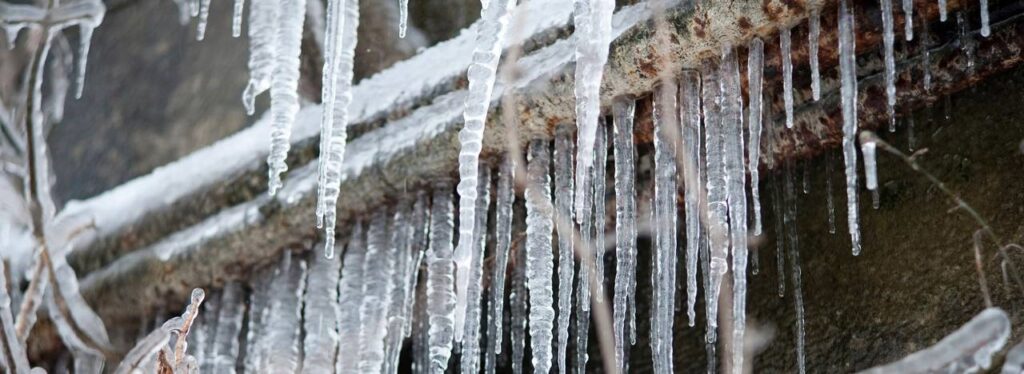Are you trying to find information concerning How To Avoid Freezing Pipes?

Winter can wreak havoc on your pipes, especially by freezing pipelines. Right here's how to stop it from occurring and what to do if it does.
Intro
As temperatures decrease, the risk of icy pipelines increases, possibly leading to expensive fixings and water damages. Understanding exactly how to avoid frozen pipelines is critical for homeowners in chilly climates.
Avoidance Tips
Protecting at risk pipelines
Cover pipelines in insulation sleeves or utilize warm tape to safeguard them from freezing temperatures. Focus on pipelines in unheated or outside areas of the home.
Heating techniques
Maintain indoor areas sufficiently heated, specifically areas with plumbing. Open up closet doors to permit cozy air to flow around pipelines under sinks.
How to recognize icy pipes
Seek reduced water circulation from taps, uncommon odors or sounds from pipelines, and visible frost on revealed pipelines.
Long-Term Solutions
Structural modifications
Take into consideration rerouting pipes away from outside wall surfaces or unheated areas. Add additional insulation to attic rooms, cellars, and crawl spaces.
Upgrading insulation
Invest in high-grade insulation for pipes, attics, and walls. Appropriate insulation aids preserve constant temperature levels and lowers the threat of icy pipelines.
Protecting Outside Pipes
Yard tubes and exterior taps
Detach and drain garden tubes prior to winter months. Install frost-proof faucets or cover outside taps with insulated caps.
Comprehending Frozen Pipes
What causes pipelines to freeze?
Pipelines freeze when subjected to temperature levels listed below 32 ° F (0 ° C) for extended periods. As water inside the pipelines freezes, it expands, taxing the pipeline wall surfaces and possibly causing them to break.
Dangers and problems
Frozen pipelines can cause water system disruptions, building damage, and pricey fixings. Burst pipes can flooding homes and cause substantial architectural damage.
Signs of Frozen Pipes
Determining frozen pipes early can avoid them from bursting.
What to Do If Your Pipes Freeze
Immediate actions to take
If you presume frozen pipelines, keep faucets open up to eliminate pressure as the ice thaws. Use a hairdryer or towels taken in warm water to thaw pipelines slowly.
Final thought
Stopping icy pipelines needs aggressive steps and fast feedbacks. By comprehending the causes, signs, and preventive measures, property owners can protect their plumbing during winter.
5 Ways to Prevent Frozen Pipes
Drain Outdoor Faucets and Disconnect Hoses
First, close the shut-off valve that controls the flow of water in the pipe to your outdoor faucet. Then, head outside to disconnect and drain your hose and open the outdoor faucet to allow the water to completely drain out of the line. Turn off the faucet when done. Finally, head back to the shut-off valve and drain the remaining water inside the pipe into a bucket or container. Additionally, if you have a home irrigation system, you should consider hiring an expert to clear the system of water each year.
Insulate Pipes
One of the best and most cost-effective methods for preventing frozen water pipes is to wrap your pipes with insulation. This is especially important for areas in your home that aren’t exposed to heat, such as an attic. We suggest using foam sleeves, which can typically be found at your local hardware store.
Keep Heat Running at 65
Your pipes are located inside your walls, and the temperature there is much colder than the rest of the house. To prevent your pipes from freezing, The Insurance Information Institute suggests that you keep your home heated to at least 65 degrees, even when traveling. You may want to invest in smart devices that can keep an eye on the temperature in your home while you’re away.
Leave Water Dripping
Moving water — even a small trickle — can prevent ice from forming inside your pipes. When freezing temps are imminent, start a drip of water from all faucets that serve exposed pipes. Leaving a few faucets running will also help relieve pressure inside the pipes and help prevent a rupture if the water inside freezes.
Open Cupboard Doors
Warm your kitchen and bathroom pipes by opening cupboards and vanities. You should also leave your interior doors ajar to help warm air circulate evenly throughout your home.

I was shown that article on How to prepare your home plumbing for winter weather from a buddy on another web address. Enjoyed our blog entry? Please share it. Help other people locate it. I love your readership.
Request Appointment